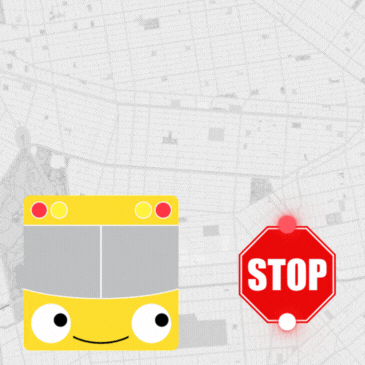On March 1, 1994, Rashid Baz a Lebanese national opened fire on a van carrying more than a dozen Hasidic students as it began to cross the Brooklyn Bridge from Manhattan, one of those passengers was Ari. He sustained a mortal injury to his head which resulted in his very untimely death five days later, on Chof Gimmel Adar, at the age of 16.
A chronicle of the events that had taken place can be read in the Extended Article. (Taken from the ‘Ari Halberstam Memorial Website’).
13 Years to the Murder of Ari Halberstam HY”D
On March 1, 1994, Rashid Baz a Lebanese national opened fire on a van carrying more than a dozen Hasidic students as it began to cross the Brooklyn Bridge from Manhattan, one of those passengers was Ari. He sustained a mortal injury to his head which resulted in his very untimely death five days later, on Chof Gimmel Adar, at the age of 16.
A chronicle of the events that had taken place can be read in the Extended Article. (Taken from the ‘Ari Halberstam Memorial Website’).
The Attack
On March 1, 1994, a gunman in a car opened fire on a van carrying more than a dozen Hasidic students as it began to cross the Brooklyn Bridge from Manhattan, critically wounding two young men and injuring two others.
The lone gunman, driving a blue Chevrolet Caprice equipped with a submachine gun, two 9mm guns, and a “street sweeper” shotgun, pursued the van full of terrified students across the bridge. He fired in three separate bursts, spraying both sides of the van. He then disappeared into traffic as the van came to a stop at the Brooklyn end of the bridge.
The injured Yeshiva students were among dozens who were returning from a Manhattan hospital where the spiritual leader of the Lubavitch movement, Rabbi Menachem M. Schneerson, had undergone minor surgery. The attack occurred less than a week after the massacre of Muslims by a Brooklyn-born Jewish settler in the West Bank.
The shooting began at 10:24 A.M. on the ramp that leads from the Franklin D. Roosevelt Drive to the Brooklyn Bridge. The van that was fired on, a white Dodge Ram 350 carrying 15 students was one of perhaps 20 vehicles en route back to Crown Heights from Manhattan Eye, Ear, and Throat Hospital, where Rabbi Schneerson was being treated. Initially, the gunman followed the Rebbe’s entourage to the Brooklyn Battery Tunnel.
When he found that it was closed to other vehicular traffic, he reversed his course and traveled north to the Brooklyn Bridge. When the gunman saw the students garbed in their Hasidic dress, he immediately opened fire.
In the first burst of gunfire, the gunman strafed the passenger side of the van, striking three of the students and blowing out the rear windows. The van came to a stop, and two of the students stumbled out as the driver and the others attempted to see if anyone had been hit.
Gunfire then erupted again from the blue four-door Chevrolet, this time raking the driver’s side. The driver of the van then sped off toward Brooklyn, leaving the two students on the bridge. They were later picked up by an emergency medical technician. The gunman followed the fleeing van with shouts of “Kill the Jews,” hailed in Arabic.
He once more fired shots at the passenger side of the vehicle before it swerved off the bridge at the Cadman Plaza exit. The van, with at least six bullet holes in its body and windows destroyed, finally came to a halt at the Brooklyn entrance to the bridge.
The Wounded
All the shooting victims were immediately rushed to St. Vincent’s Hospital. The most severe of the wounded was 16-year-old Ari Halberstam who was shot in the head. He suffered from profound brain injuries and died five days later.
Nachum Sosonkin, 18, also shot in the head, underwent surgery to relieve pressure on his brain. He still has a bullet lodged in his brain, but has made a miraculous recovery. He is deaf in one ear and has trouble walking unaided.
Two other students, Yaakov Schapiro, 17, and Levi Wilhelm, 18, suffered less serious gunshot wounds. One lost part of his intestines. Needless to say, every one of the 14 boys on that van will carry the trauma of these experiences for the rest of their lives.
The Funeral
At least ten thousand mourners gathered in front of 770 Eastern Parkway, the headquarters of the Lubavitcher Rebbe. Cries of anguish could be heard as the coffin bearing the body of Ari Halberstam was carried to the funeral hearse. The hearse drove Halberstam for a final tour of Crown Heights, past the yeshiva on Troy Avenue where he studied, past the Lubavitcher Rebbe’s former home on President Street.
It stopped in front of the Halberstam home on Eastern Parkway, where members of the family made a small incision into their clothing, and Ari’s father, mother and siblings ripped another three inches deeper, saying, as is customary for the Jewish mourner, “Blessed is the True Judge.” They then put on their coats and walked slowly down Eastern Parkway and knew this funeral would not be private.
Their Ari now belonged to history, a history of martyrs, mentioned in the same breath as Yankel Rosenbaum and the Six Million. Thousands of Jews swelled across Eastern Parkway and down Kingston Avenue. They all came, Reform, Conservative, Viznitz, Belz, Agudah.
Dozens of Hasidim watched from fire escapes. Mayor Giuliani and Gov. Mario Cuomo watched from the podium. More than 250 police officers joined in the funeral procession to guard against any incidents that might take place.
Rabbi Sholom Ber Hecht, a cousin of the Halberstam family addressed the masses, in a rare eulogy for Lubavitcher Chasidim, who only eulogize martyrs. On the last Sabbath of Halberstam’s life, said an emotional Hecht, “When the Torah scroll was read in the main synagogue, a mistake, a defect was found in the Torah. The word echod; meaning oneness or unity, was found to be written incorrectly,” rendering the entire scroll unfit for use. “Upon reflection, an amazing thought comes to mind. The Hebrew letters of the word echod comprise the initial letters of Halberstam family, Aaron, the child, and the parents, Chesed and Devorah. ”The unity of this family has now been shattered by a terrorist’s bullet.
Our sages tell us, every Jew is a letter in the Sefer Torah. When the life of one family is devastated, then the entire Sefer Torah is affected; the life of the entire Jewish people is shattered and, clearly, this is a sign from on High that there is imperfection in the unity of the Jewish people…
He has been offered up as a sacrificial lamb, and his life has been taken as a family and the entire Jewish people.“ Hundreds of drivers got out of their cars and stood to pay tribute as the hearse carried Ari Halberstam’s body to the chapel in Montefiore Cemetery in Queens.
The Chevra Kaddisha (those involved in Jewish burial) lowered Halberstam into the grave just across the aisle from the Lubavitcher Rebbe’s wife, of blessed memory. Down with the casket went some sand from the previous Lubavitcher Rebbe’s grave and some holy soil from the Land of Israel, to ease the resurrection.
Befitting the ideology, the Kaddish was said: ”May His Great Name grow exalted and sanctified in the world which He will create anew, where He will resuscitate the dead…and rebuild the city of Jerusalem.“ The Halberstam’s went home to Eastern Parkway, the little ones cried and ate bagels and eggs. (This is a Jewish customs for mourners.
After the funeral, neighbors provide the mourners with their first meal, a ”meal of condolence.“ It is customary to eat round foods at this meal (e.g., eggs, lentils, bagels), symbolic of the cycle of life and death; also, the circle has no opening, just as the mourners cannot yet find the words to express their grief.)
The Arrest
Soon after Rashid Baz strafed the fan full of students, he drove his damaged car to a Brooklyn repair shop and shoved a gun against an employee’s head. ”Fix my car and fix it fast,“ he demanded.
The employee of the Hilal Auto Repair Service in Red Hook contacted police after the suspect drove from the lot, one car window shattered during the shooting spree, still unrepaired.
That tip and others, directed detectives to Baz, 28, a Lebanese national arrested March 2, 1994, and charged with 15 counts of attempted murder in the Brooklyn Bridge attack that inflamed fears of Arab retaliation for the massacre of mosque worshippers on Israel’s West Bank just a few days earlier.
The Beirut-born Baz, who entered the United States on a student visa in 1984 and briefly attended Rockland Community College, was arrested at 2:30 a.m. at a 242 45th St., Brooklyn residence he shared with an aunt and uncle. Bassam Reyati, 27, who runs the Pioneer Car Service that employs Baz and owns the Chevrolet Impala the suspect drove through his alleged spree, was also arrested, as was Hilal Mohammed, 32, is an acquaintance of Baz and owner of the repair shop.
Both Jordanians living in Brooklyn, they were charged last night with hindering prosecution and illegal weapons possession. Investigators turned up four illegal weapons in Reyati’s home – a 9mm Cobray handgun, a Glock 17 semiautomatic, a ”street sweeper” 12-guage shotgun and a .380-cal semiautomatic pistol. Police also recovered a stun gun, a bulletproof vest and two 50-round ammunition clips for the Cobray.
Baz told police he bought the weapons after being robbed six weeks ago. In a statement to detectives, Baz reportedly insisted he began firing only after the vanload of students taunted him on the FDR drive over his Muslim headdress, a kaffiyeh. Baz told detectives that the attack began as a traffic dispute at the FDR exit to the bridge.
Detectives armed with search warrants for the repair shop and the blue 1978 Impala, found a few blocks from Hilal Auto Repair Shop, retrieved shell casings that matched bullets fired at the students.
The suspect apparently tossed spent shells into the dumpster after cleaning out the vehicle at the 237 Hamilton Ave. shop, not far from the bridge. Search warrants were also executed for Baz’ 45th Street apartment and a hallway adjacent to it.
Detectives found anti-Jewish literature in the apartment, which is leased to his uncle. Baz did not have a livery cab driver license from the city. Pioneer Car Service was also operating without a license.
The Sentencing
On December 1, 1994, Rashid Baz was convicted of one count of second-degree murder and 14 counts of attempted murder, one for each of the surviving students in the van. On January 18, 1995, he was sentenced to 141 years in prison for the attack.
Mr. Baz sat placidly throughout the hour-long proceeding and chose not to speak on his own behalf. Barring a successful appeal, he will probably spend the rest of his life in jail. According to the state law, a prisoner must serve at least the minimum of his sentence before being eligible for parole.
In Mr. Baz’s case, the minimum is 141 years and 8 months. Justice Harold Rothwax of State Supreme Court sentenced Mr. Baz to 25 years to life for the second-degree murder charge, and consecutive terms of 8 1/3 years to 25 years for the attempted murder counts.
During his five-week trial a psychologist and a psychiatrist testified for the defense that Mr. Baz, who at age 9 had joined one of the armed militias, had suffered serious trauma while growing up amid the warfare. His lawyer, Eric Sears, argued that he was suffering from post-traumatic stress disorder on the day of the shooting.
Upset by the massacre of Muslim worshippers in Hebron, Baz suffered a flashback when he saw the van of Hasidic students and believed that they were attacking him. But a prosecution psychiatrist described him as angry man with an antisocial personality.
In pleading for leniency, Mr. Sears said that Mr. Baz had acted spontaneously and said the court should consider the trauma of Mr. Baz’s early years and lack of an arrest record. Judge Rothwax said that Mr. Baz deserved the most severe punishment and that the court will recommend against release of this defendent on parole ever.
There was silence in the court room as Mr. Baz walked toward a side door, turned his head to look toward the audience once, and then again, both times for a long time.
He had no expression, and he seemed to be looking for someone he knew, but there was apparently no one there for him. Or else, it was to stare at the Hasidic Jews, who stared back at him across the rail of the courtroom that separated them.













avremi
i hope that guy rotes in jail for his sensless crime!!!
a friend
Ari – we miss you
website
WHATS THE WEBSITE?
LET HIM DIE
he deserves the death row – a pity they dont do it any more…
elchonon
Avremi,
It was no “sensless crime” it was a terror attack, y’know likle the first world trade center bombing.. one of many the FBI hushed up.
STJ
Can’t believe its 13 years!! Ari we miss you!
trouble
btw him and lemrik nelson, I now support torture and the death penalty
ARI IN OUR HEARTS FOREVER
Sh. Torah u mitzvos
the very best we can do is to be the best we can be…..what the Rebbe wants from us. Torah and Mitzvos b’Hiddur…..AHAVAS YISROEL B’HIDDUR and accepting each other as Jews no matter what. Going to mashpias so we can stay on track and get better at being the Rebbe’s Army.
Ari
i went to camp with Ari and played baseball with him throughout the year in lefferts park. he was the nicest person you will ever meet. he used to give me cake that the rebbiten send to him in camp.
we miss you Ari
Itzhak Schier
Ari’s neshomo should have an aliya and the ultimate aliya is vehekitzu..vehu besoicham.
And you forgot YMS next to Rashad Baz YMS’s name.
yossy hershkop
he was not a lone gun man he was a terrorist and the shooting in the so called hebron mosque was mot a jewish terror massacre it was a act of self defence
Ari Halberstam Website
The Website is http://www.AriHalberstam.com
go pataki
“he deserves the death row – a pity they dont do it any more”
if i’m not mistaken they do have it, but ari’s murder to place before Pataki signed the bill.
We Want Moshiach Now!
We need Moshiach Now!!!!!!!!!
thanbo
why so many signs on the bklyn bridge, though? it looks strange, kinda gayvadik. terrible tragedy, shouldn’t be tainted by comments on excessive signage
a good frined
When I was in camp together with Ari, he used to come to my room every morning to make a brocha on my tzitzis, since he did not have 2 pairs he couldn’t make a brocha on his, I had 2 pairs so he would come to me. Ari was a true Penimi, beleive me no one know he did this. Ari may your neshuma have an Aliah and may we be Zocheh to see you very soon together with Moshiach Tzidkeinu